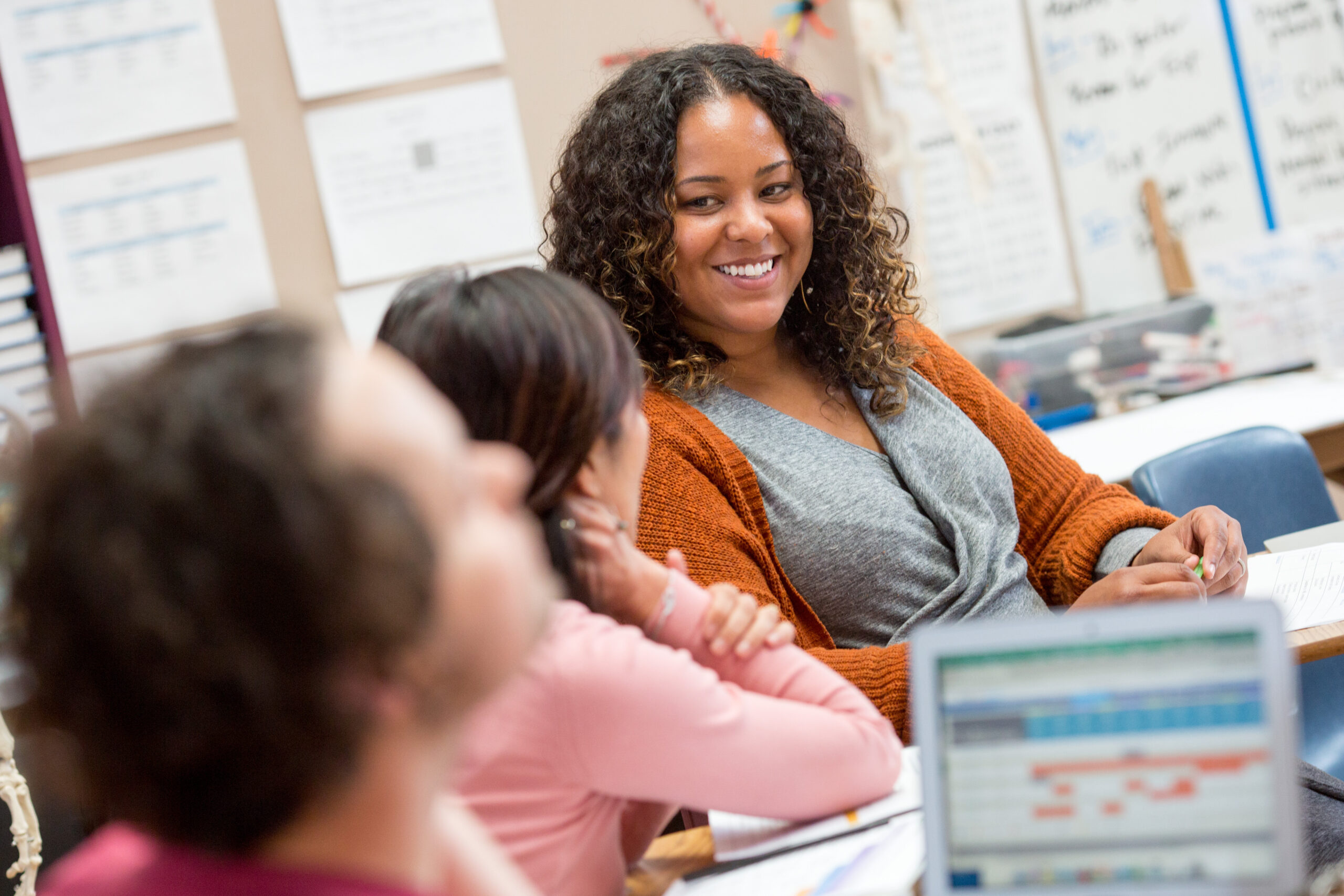Responding to Insurrection: How Do We Talk With Students?
This is indeed a challenging time in our nation’s history. We’re witnessing in real time how fragile democracy can be and that it needs to be nurtured and defended. Discussing the insurrection with students is a challenging task, yet we know as educators we cannot avoid these conversations. Some of us work with young learners, older learners and even adult learners. No matter our context, we all have the same obligation—to uphold a democratic education, to engage learners in critical thinking and conversations, and to prepare them as contributors to a healthy, inclusive society. Sometimes it might seem easier to avoid having challenging conversations, but it’s imperative that we do. Assume students are interested, care about the world they live in and want to talk and be heard. Creating space and time for students to talk is key. They need support to process what they are seeing, how they are feeling and questions they have. Above all, students need adults to assure them that they are safe and going to be OK.On Jan. 14, the Friday Institute convened a panel of experts to respond to the question: How can educators engage students in constructive conversations about this challenging moment in our nation’s history? Here are four takeaways from the discussion that I think best answer this question, as well as resources to put those tips into practice.
Process Your Own Emotions
Take the time and space that you need to get clear about your own responses to the attack on the Capitol. Be in a good space to articulate your thoughts as you engage students.
Marlin Jones, M.Ed., a social studies teacher at Needham B. Broughton Magnet High School, said in the panel that educators need to be prepared before having these conversations.
[callout bodyfontface=”universlight” headingicon=”noicon” textalign=”textcenter” url=”https://beyondthestoplight.com/” type=”basic” bgcolor=”gray10″ margin=”normal”]A resource guide for parents, teachers and caregivers about creating caring and equitable classrooms[/callout]
Engage Other Educators for Support
Have an educational support team around you. You don’t have to do this alone. Panelists talked about the need for critical colleagueship in processing our own reactions, getting clear about our obligations and goals as teachers, and co-constructing lesson plans to support students. These conversations don’t have to take place in certain classrooms. They can be held in morning meetings or homeroom or wherever students feel they have a safe space, and to do that, you need to engage your entire school community.
During the panel, Angela Cusaac, M.Ed., assistant principal intern at L.B. Yancey & Pinkston Street Elementary, suggested utilizing the support systems you already have.
[callout bodyfontface=”universlight” headingicon=”noicon” textalign=”textcenter” url=”https://theconversation.com/how-should-schools-teach-kids-about-what-happened-at-the-us-capitol-on-jan-6-we-asked-6-education-experts-152884?fbclid=IwAR0ixTTcxs_Rg0620fJim4DYDhnu7cpcbtssQhg9WTZg6pjMY_9KPajSnJA” type=”basic” bgcolor=”gray10″ margin=”normal”]Suggestions from other educators on The Conversation[/callout]
Do Your Research and Have Your Facts Straight
Meghan Manfra, Ph.D., associate professor of social studies at the NC State College of Education, says it’s important to have a good plan in place. Although it might be hard to react quickly to these events, if you have a plan generally for how to address discussions through class conduct or ground rules for the classroom, then at least students will have protocols they can follow.
Marlin Jones, M.Ed.
Jones also emphasized the value of primary documents. For younger students, primary documents could be picture books or images of significant symbols of democracy.
Dr. Meghan Manfra
Regarding how you approach discussing politics in the classroom, Manfra recommends taking an approach of committed impartiality with those resources.
[callout bodyfontface=”universlight” headingicon=”noicon” url=”https://www.pbs.org/newshour/extra/daily-videos/classroom-resource-insurrection-at-the-u-s-capitol/” type=”basic” bgcolor=”gray10″ margin=”normal”]PBS classroom resources related to the insurrection at the U.S. Capitol [/callout]
[callout bodyfontface=”universlight” headingicon=”noicon” url=”https://www.nytimes.com/2021/01/07/learning/teaching-resources-to-help-students-make-sense-of-the-rampage-at-the-capitol.html” type=”basic” bgcolor=”gray10″ margin=”normal”]The New York Times has curated instructional materials, including videos[/callout]
[callout bodyfontface=”universlight” headingicon=”noicon” textalign=”textleft” url=”https://fi.ncsu.edu/projects/foundations-of-media-literacy-mooc-ed-providing-professional-learning-in-the-era-of-fake-news-and-mis-information/” type=”basic” bgcolor=”gray10″ margin=”normal”]The Friday Institute’s Foundations of Media Literacy course is designed to help educators engage students in critical media literacy[/callout]
Draw on Previously Established Relationships with Students
Panelists offered practical tips for day-after conversations, but they also emphasized the importance of developing a culture of communication from the beginning. Who are your students? How do they like to receive support in challenging times? Are there explicit discussion norms and procedures in your classroom that students agree with and uphold? Are you prepared for what Jones called “firebombs,” or surprising, upsetting and inflammatory comments from students?
Dr. LaTricia Townsend
As long as students know you support them and that your classroom is a brave space to discuss their feelings and concerns, then it will be easier to have these conversations, said panelist LaTricia Townsend, Ed.D., director of federal program monitoring and support at the North Carolina Department of Public Instruction.
[callout bodyfontface=”universlight” headingicon=”noicon” textalign=”textcenter” url=”https://www.tolerance.org/the-moment/january-7-2021-leading-conversations-after-the-insurrection-in-washington-dc” type=”basic” bgcolor=”gray10″ margin=”normal”]Teaching Tolerance has a vibrant collection of resources to guide educators[/callout]
- Categories:


